Local naturalist, Sue Hudson, shares a recent trip to Havannah Nature Reserve that saw NHSN members find and record a fantastic nine species of ladybird
Havannah Nature Reserve is an area of lowland heath situated about 5 miles north of the centre of Newcastle. There is a lot of subsidence associated with the former mine that was on the site with marshland and ponds as well as woodlands, meadows and scrub. It is home to a variety of wildlife of local and national importance.
The area of the reserve that we visited looking for ladybirds was rich in Scots Pine, gorse and heather adjacent to ponds and marshy areas with reeds, and in the sunshine looked promising as a site for a variety of overwintering ladybirds.
We were fortunate that the event was without rain, snow or strong winds and that there was plenty of sun in sheltered south-facing locations. It wasn’t long before numerous 7- Spot and smaller Pine Ladybirds, as well as a few 2-Spot Ladybirds, were sighted on the needles of young Scots Pine trees.
Tree beating and visual searching revealed the presence of the handsome chestnut coloured Striped ladybird with its stripy markings, a conifer specialist that overwinters in the moss or soil below Scots Pine trees that is hard to confuse with any other ladybird. Another conifer specialist, the Larch ladybird was also found on Scots Pine, (although it is more often seen on Larch), was much harder to see as it was well camouflaged on bark by its dull, light brown elytra. The dark line running down the midsection was a helpful identifying feature.
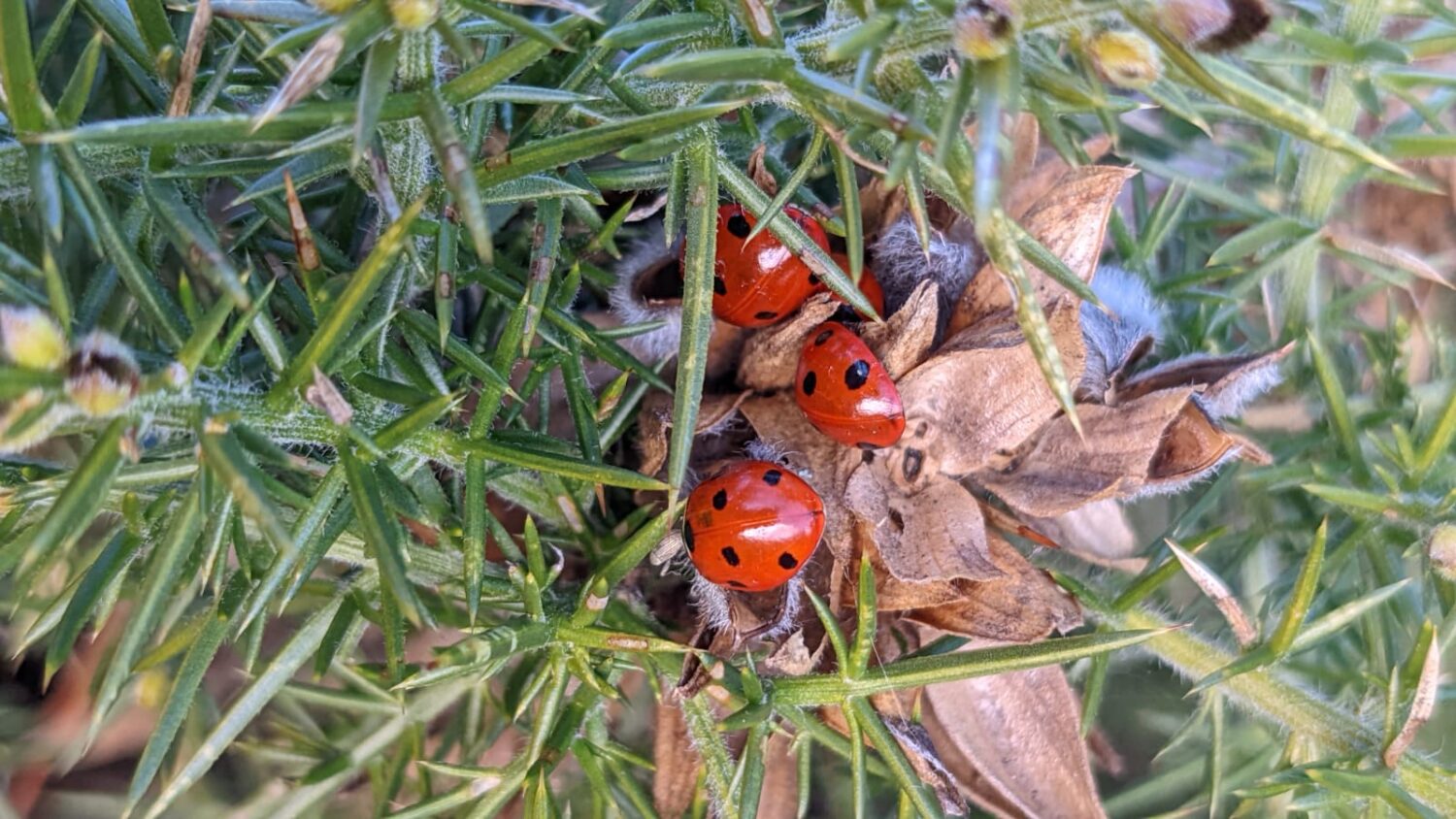
7-Spot Ladybirds © Matt Williamson 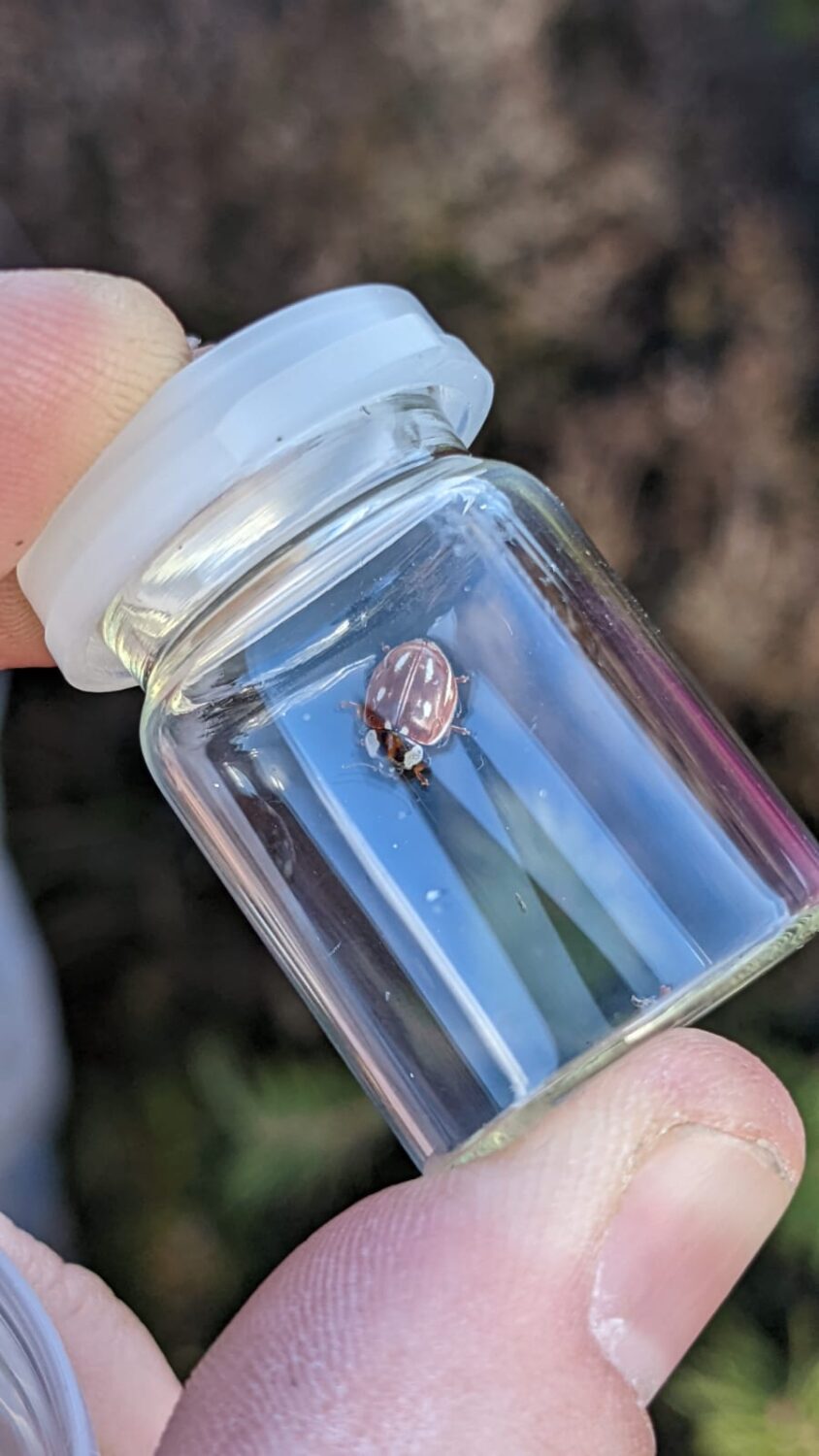
Striped Ladybird © Matt Williamson 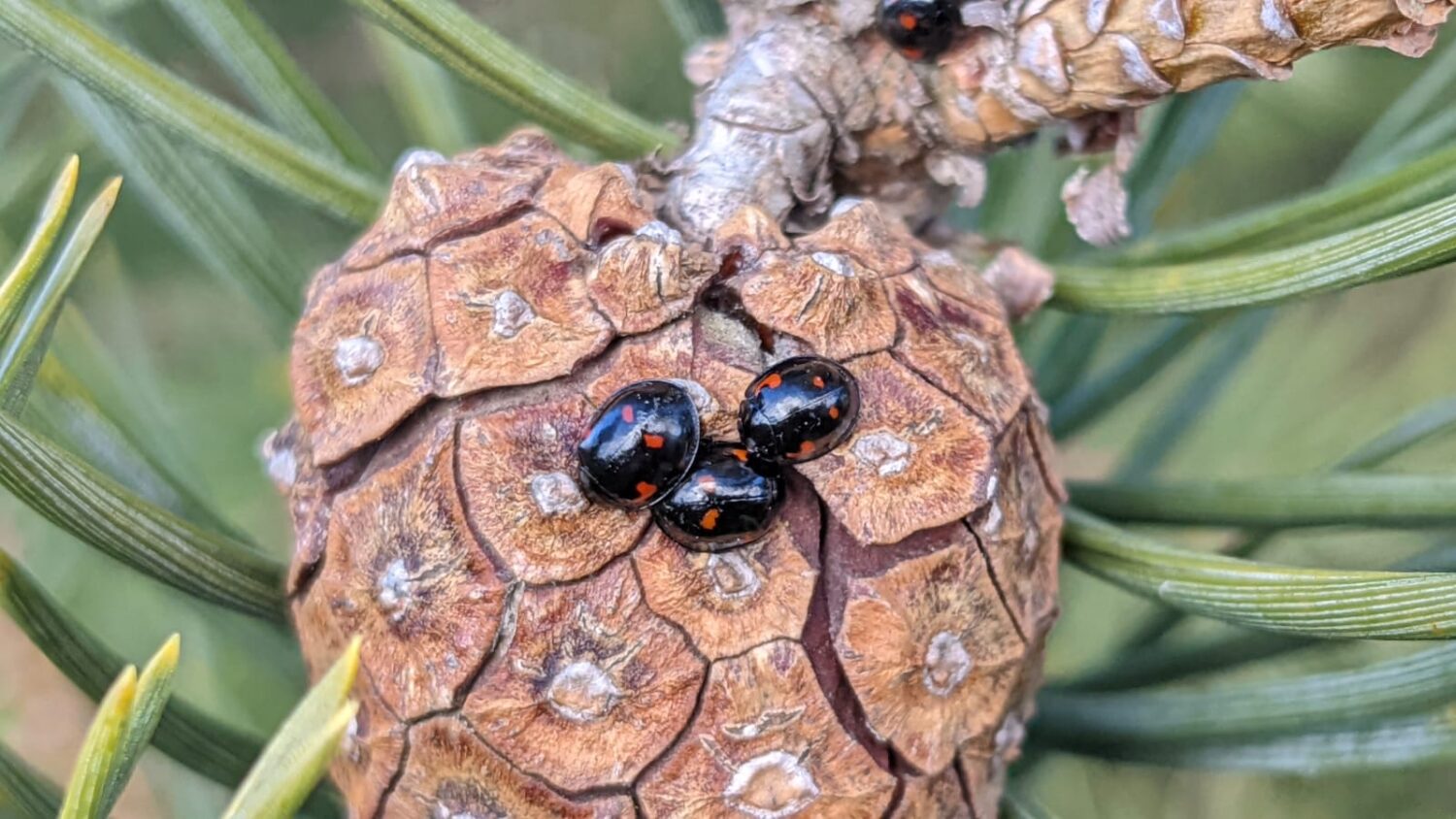
Pine Ladybirds © Matt Williamson
The Adonis ladybird is a non-conifer specialist which overwinters in leaf litter and low lying plants such as gorse. This is a ladybird in which the number of spots can vary but the spots are usually situated on the posterior part of the elytra.
In the winter Water Ladybirds and the Red Marsh ladybird shelter between the leaf sheaths of reeds and reedmace. The Water ladybird that was found had a buff/ beige background colour with numerous black spots. In summer the background colour of the elytra changes to red.
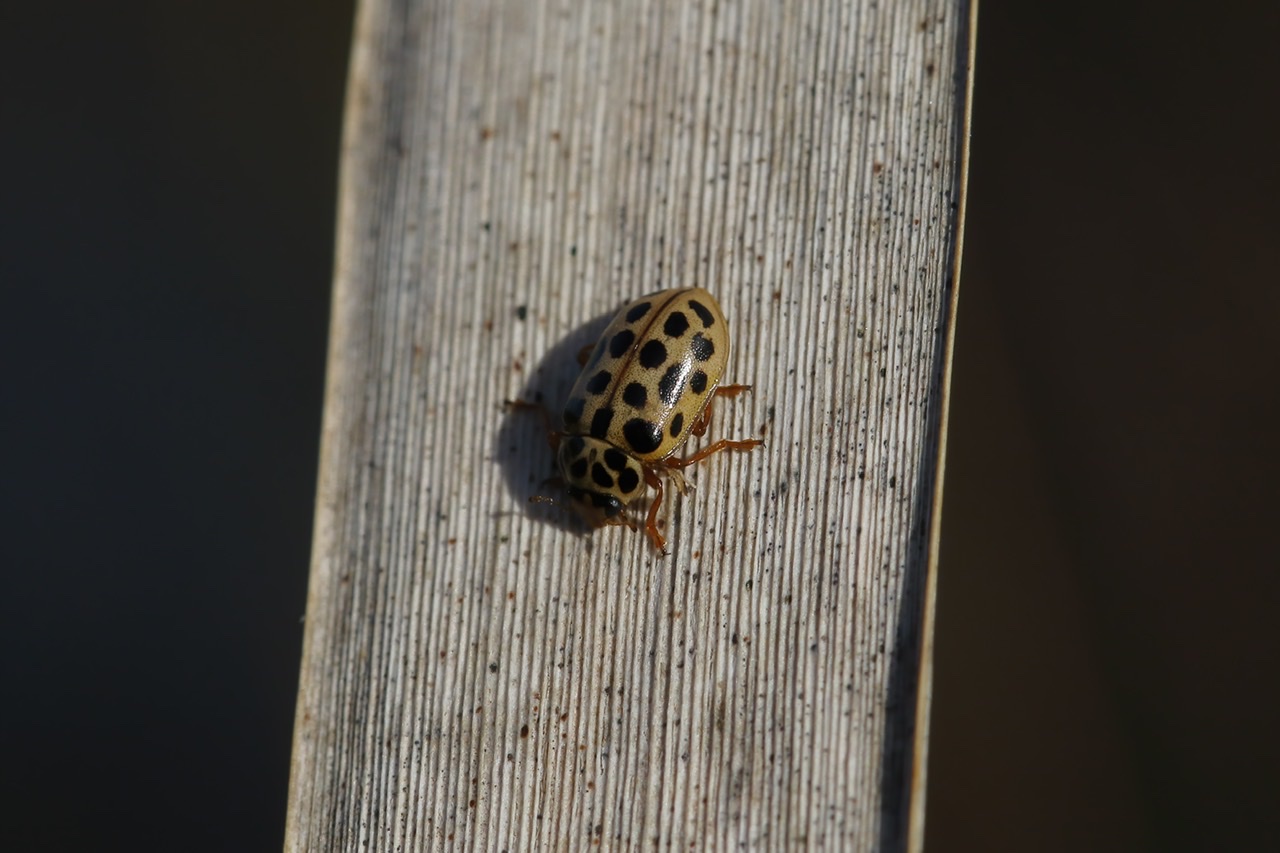
Water Ladybird © Chris Barlow 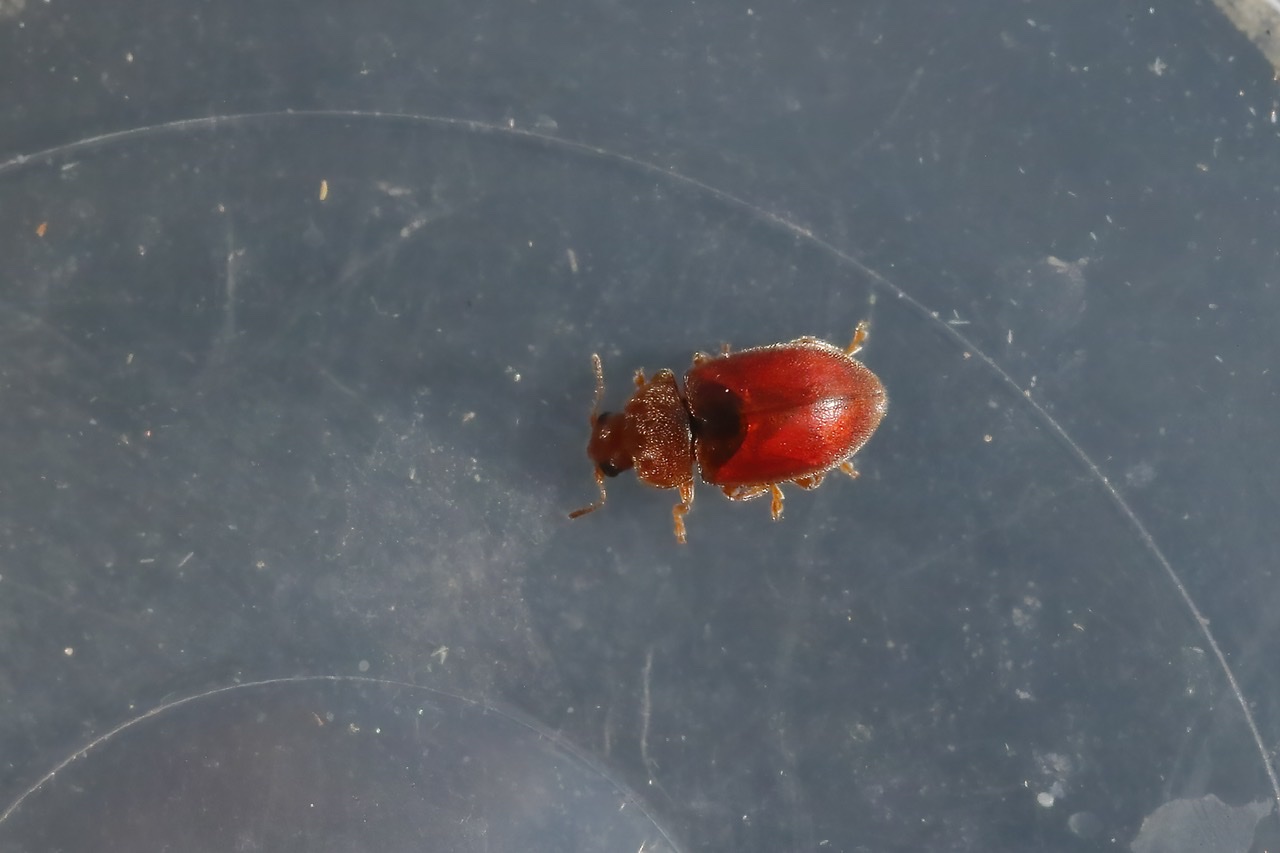
Red Marsh Ladybird © Chris Barlow
Inconspicuous ladybirds are much smaller and less obviously ladybird like than the brightly coloured and strongly patterned conspicuous ladybirds. The biggest challenge perhaps is seeing them in the first place. The only non-conspicuous ladybird that was found was the Red Marsh ladybird. Distinctive features include relatively long antennae and a hairy, elongate brownish-red body with no spots. It is not commonly reported in the North East despite being the most commonly recorded inconspicuous ladybird nationally.
Part of the woodland, which as well as conifers has a variety of deciduous trees that provide ladybird habitats, was closed following recent storms. Even so, five of the ten ladybirds listed as targeted spotlight species in the North East Ladybird Spot were identified in a small area including a brief foray into the flooded adjacent wetlands. This site is well worth visiting and there is plenty of help available to identify and report sightings. Bring a hand lens and wear wellies rather than walking boots if the ground is likely to be wet!
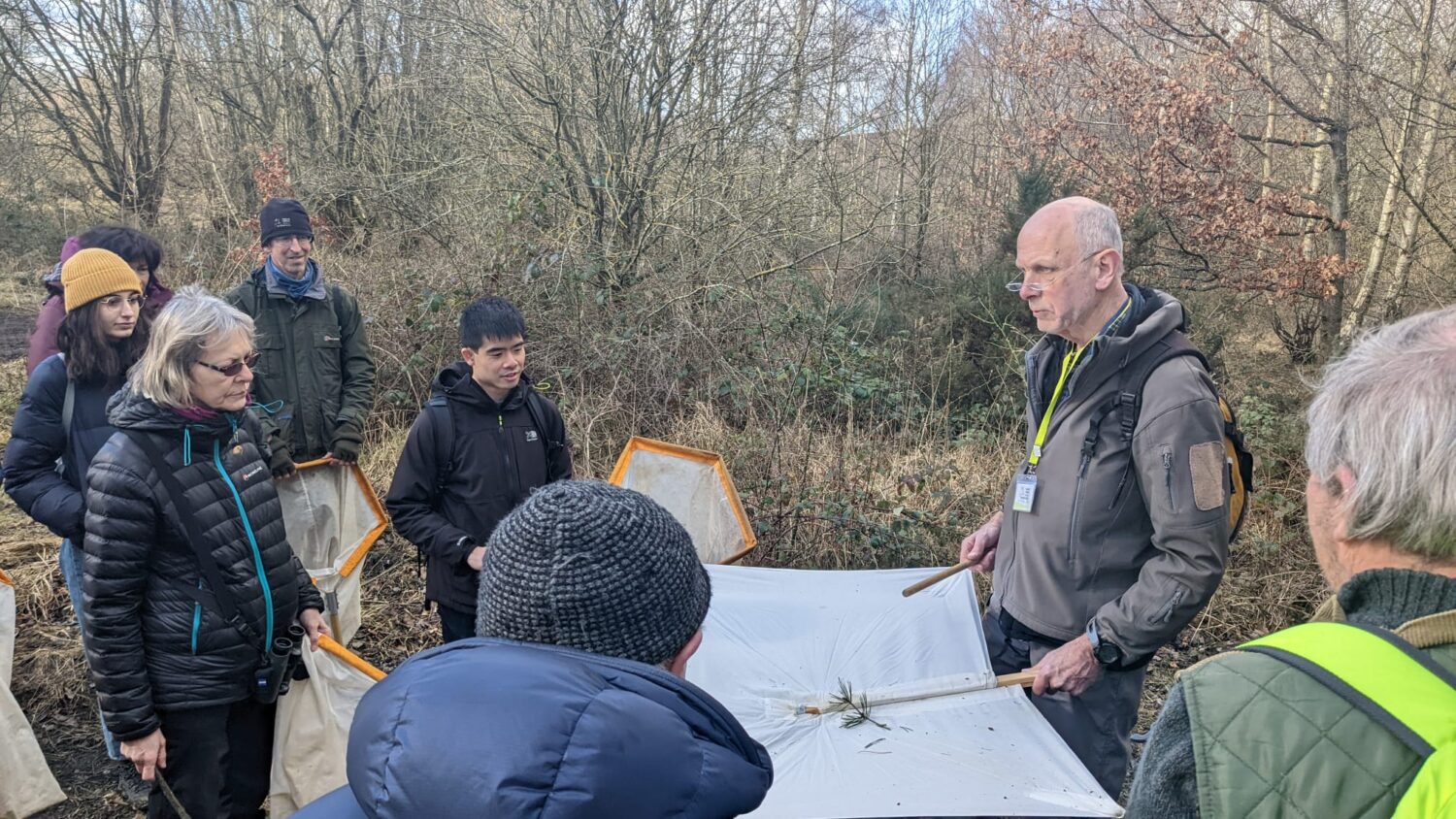
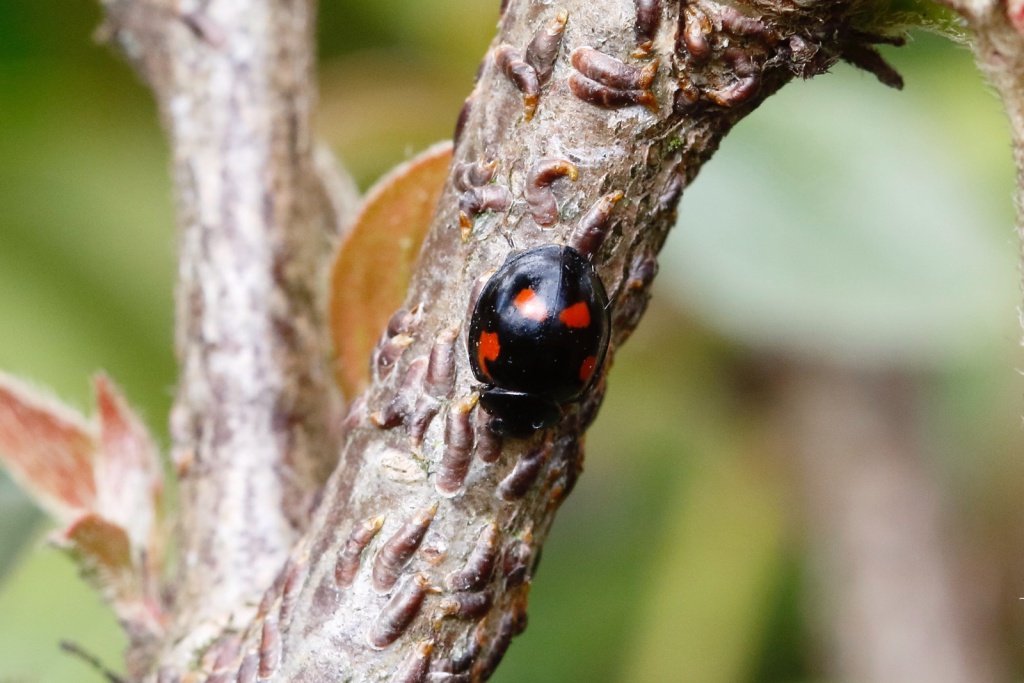
Share your discoveries
Urban or rural, beginner or expert, we need your help to record ladybirds across the North East.
Your records can add to our understanding of ladybirds in the region and inform conservation and monitoring efforts.
Taking part is easy and every record counts, wherever you live in the North East. Records of all ladybird species are welcome.